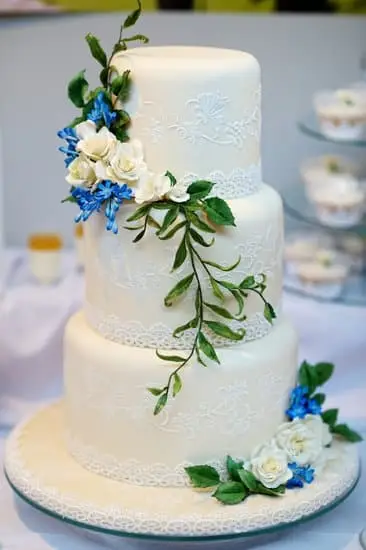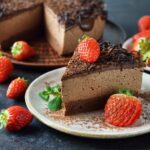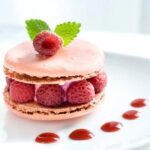When it comes to decorating cakes, one of the key elements that can elevate a simple dessert into a work of art is the type of cream used for decoration. Cream plays a crucial role in adding flavor, texture, and visual appeal to cakes, making it an essential component in the world of baking and confectionery.
From luscious buttercream to light whipped cream and flavorful cream cheese frosting, the type of cream you choose can significantly impact the overall look and taste of your cake creation.
But what cream is used to decorate cakes? The answer to this question depends on personal preference, dietary restrictions, and the desired effect you wish to achieve. Some popular options for cream in cake decoration include buttercream, whipped cream, and cream cheese frosting. Each type offers its own unique characteristics and can be customized to suit different tastes and styles of cake decorating.
In this article, we will explore the various types of cream used for cake decoration, including detailed explanations on how to make and use buttercream, the pros and cons of using whipped cream for decoration, and the unique flavors of cream cheese frosting. Additionally, we will delve into vegan and dairy-free alternatives for those with dietary restrictions, as well as provide tips and tricks for creating stunning designs with cream on your cakes.
Let’s uncover the versatile world of cream in cake decorating and inspire your next baking creation.
Types of Cream Used for Cake Decoration
When it comes to decorating cakes, the type of cream used can make a significant difference in both taste and aesthetics. Understanding the various options available can help elevate your cake decorating skills and create stunning desserts for any occasion. Here are the most common types of cream used for cake decoration:
- Buttercream: Buttercream is a classic choice for decorating cakes due to its versatility and ease of use. Made with butter, powdered sugar, and flavorings, buttercream can be easily colored and piped into intricate designs. It holds its shape well in different temperatures, making it ideal for detailed decorations.
- Whipped Cream: Whipped cream is light, airy, and adds a fresh flavor to cakes. Made by whipping heavy cream and sugar together, whipped cream is perfect for simple and elegant decorations. However, whipped cream can be more delicate than other types of cream and may need to be kept refrigerated until serving.
- Cream Cheese Frosting: Cream cheese frosting offers a tangy flavor that pairs beautifully with cakes. Made with cream cheese, butter, powdered sugar, and vanilla extract, this frosting is rich and creamy. It is often used for red velvet cakes or carrot cakes due to its distinct taste.
Each type of cream brings its own unique qualities to cake decorating, allowing for endless creativity and customization in design. Whether you prefer the richness of buttercream, the lightness of whipped cream, or the tanginess of cream cheese frosting, there is a cream that suits your preferences and baking needs when it comes to decorating delicious cakes.
Buttercream
To make buttercream, start by creaming softened butter until it becomes light and fluffy. Gradually add powdered sugar and continue mixing until the desired consistency is achieved. For a richer flavor, vanilla extract or other flavorings can be added. Adjust the consistency by adding milk or heavy cream if needed. Once the buttercream is ready, it can be tinted with food coloring to create different hues for decorating cakes.
When using buttercream for cake decoration, it is essential to ensure that the cake layers are completely cooled before applying the cream. A crumb coat can be applied first to seal in any crumbs before adding a thicker layer of buttercream for the final design. Different piping tips can be used to create various shapes and textures on the cake surface, allowing for endless creative possibilities in cake decorating with this versatile cream.
Overall, buttercream offers not only a deliciously sweet flavor but also a smooth and easy-to-work-with consistency that makes it a favorite among bakers and decorators alike. Whether you’re creating a simple birthday cake or an elaborate wedding cake, buttercream provides endless opportunities for artistic expression when it comes to decorating cakes with this classic type of cream.
Whipped Cream
However, one of the challenges with whipped cream for cake decoration is its stability and ability to hold its shape for an extended period. Whipped cream tends to deflate over time, especially if exposed to heat or humidity, which can affect the overall look of the cake.
This makes whipped cream less suitable for intricate designs or decorations that require longer-lasting form. To overcome this issue, stabilizers such as gelatin or cornstarch can be added to whipped cream to help it maintain its shape and structure.
In comparison to buttercream or cream cheese frosting, whipped cream is a lighter option that appeals to those looking for a more delicate and fluffy texture in their cake decorations. Its versatility allows for easy incorporation of different flavors and colors, making it a versatile choice for various cake themes and occasions.
Whether used as a simple topping or part of a more elaborate design, whipped cream offers a fresh and creamy element that enhances the visual appeal and taste of cakes.
| Advantages | Challenges |
|---|---|
| Light and airy texture | Stability issues over time |
| Customizable flavor options | May deflate when exposed to heat/humidity |
Cream Cheese Frosting
Texture and Spreadability
One of the key characteristics of cream cheese frosting is its smooth and spreadable texture. When whipped together correctly, the cream cheese and butter create a luxurious consistency that glides effortlessly over cakes. This makes it ideal for both filling layered cakes and creating intricate designs on the surface. However, because of the soft nature of cream cheese frosting, it may not hold up as well in warm temperatures compared to firmer frostings like buttercream.
Flavor Versatility
Cream cheese frosting’s flavor profile can be customized to suit different preferences by adjusting the amount of powdered sugar used in the recipe. Some bakers prefer a more tangy frosting that allows the natural flavor of the cream cheese to shine through, while others opt for a sweeter version by adding more sugar.
Additionally, flavors like citrus zest, cocoa powder, or extracts can be incorporated to enhance the overall taste of the frosting, making it a versatile option for various cake styles.
Cream cheese frosting not only adds richness and depth to cakes but also provides a contrast in flavor that balances out sweetness. Its unique combination of tanginess and sweetness makes it a favorite among those looking to elevate their cake decorating game with an extra layer of complexity and sophistication that other frostings may not offer.
Vegan and Dairy-Free Alternatives for Cream in Cake Decoration
Cream is a key component in cake decoration, providing not only delicious flavor but also a smooth and creamy texture to the finished product. For individuals with dietary restrictions or preferences, finding suitable alternatives to traditional cream can be essential. Luckily, there are various vegan and dairy-free options available that can be used in cake decorating to achieve similar results.
One popular vegan alternative to traditional cream is coconut whipped cream. Made from the solidified coconut cream found in canned coconut milk, this dairy-free option provides a light and fluffy texture perfect for piping onto cakes. Coconut whipped cream pairs well with tropical flavors like pineapple or mango, adding a unique twist to traditional cake decorations.
Another dairy-free option for cream in cake decoration is cashew cream. Made by blending soaked cashews with water until smooth, this versatile substitute can be sweetened and flavored as desired. Cashew cream works well for both filling layers in cakes and as a base for frosting, offering a rich and creamy consistency that complements a variety of cake flavors.
For those looking to avoid both dairy and nuts, soy-based creams can also be used for cake decoration. Soy-based creams are widely available in stores and provide a neutral base that can easily be customized with different flavors and colors. These alternatives allow individuals with dietary restrictions to enjoy beautifully decorated cakes without sacrificing taste or texture.
| Vegan Cream Alternatives | Characteristics |
|---|---|
| Coconut Whipped Cream | Light & fluffy; pairs well with tropical flavors |
| Cashew Cream | Rich & creamy; versatile for fillings & frostings |
| Soy-based Creams | Neutral base; easily customizable with flavors & colors |
Tips and Tricks for Decorating Cakes With Cream
Cream is a versatile ingredient in cake decorating, allowing for endless possibilities in creating beautiful and delicious designs. When it comes to decorating cakes with cream, there are various tips and tricks that can elevate your creations to the next level. From mastering piping techniques to experimenting with color variations and texture ideas, the possibilities are truly endless.
Piping Techniques
One of the most common ways to decorate cakes with cream is through piping techniques. Piping allows for intricate designs, from simple swirls and rosettes to more complex patterns and shapes. To achieve beautiful piping decorations, it is important to use the right consistency of cream. For example, if using buttercream, make sure it is at the correct temperature for piping – too cold and it won’t pipe smoothly, too warm and it will collapse.
Color Variations
Adding color to cream opens up a whole new world of cake decorating possibilities. Whether you choose to go with pastel hues for a delicate look or bold colors for a statement cake, coloring your cream can help bring your design vision to life. Gel food coloring is often preferred over liquid food coloring as it provides more vibrant colors without altering the consistency of the cream.
Texture Ideas
Experimenting with different textures can also add visual interest to your cake decorations. Combining smooth buttercream with crunchy toppings like nuts or sprinkles can create a dynamic contrast in both flavor and texture. Another popular trend is using a spatula or comb to create textured finishes on cakes, adding depth and dimension to your design.
By mastering piping techniques, exploring color variations, and playing with different textures, you can take your cake decorating skills to new heights. The key is practice and experimentation – don’t be afraid to get creative and try new ideas when using cream to decorate cakes.
Popular Trends in Cream Cake Decoration
Cream cake decoration has evolved over the years, not just in terms of taste but also in presentation. One of the popular trends in cream cake decoration is the creation of drip cakes. These cakes feature a thin layer of ganache or icing dripping down the sides, creating a visually appealing and decadent look. Drip cakes can be customized with different flavors and colors, making them versatile for various occasions such as birthdays, weddings, or other celebrations.
Another trend that has captivated cake decorators and enthusiasts alike is naked cakes. These cakes are characterized by their minimal frosting on the outside, allowing the layers and fillings to be showcased elegantly. This style of cake decoration highlights the natural beauty of the sponge and fillings used, often adorned with fresh fruits, flowers, or edible decorations. Naked cakes offer a rustic charm that appeals to those looking for a more laid-back yet sophisticated dessert for their events.
In contrast to naked cakes, ombre designs have been gaining popularity for those seeking a more whimsical and colorful cake presentation. Ombre cakes feature layers of varying shades of color gradually fading into each other from light to dark. This gradient effect adds depth and dimension to the cake’s appearance, creating a visually striking centerpiece for any celebration. With ombre designs, decorators can experiment with different color combinations to suit the theme or preferences of their clients or guests.
Conclusion
In conclusion, the use of cream in decorating cakes opens up a world of endless possibilities for creativity and innovation. Whether it’s the smooth and rich buttercream, the light and fluffy whipped cream, or the tangy cream cheese frosting, each type of cream brings its own unique flavor and texture to cake decoration.
The versatility of creams allows bakers to experiment with different colors, patterns, and designs to create stunning masterpieces that not only look beautiful but taste delicious as well.
Furthermore, as mentioned earlier, there are also vegan and dairy-free alternatives available for those with dietary restrictions or preferences. This ensures that everyone can enjoy beautifully decorated cakes regardless of their dietary needs. Additionally, tips and tricks such as piping techniques, color variations, and texture ideas provide aspiring bakers with the tools they need to elevate their cake decorating skills to the next level.
Overall, the trends in cream cake decoration continue to evolve with popular styles such as drip cakes, naked cakes, and ombre designs taking center stage. These trends showcase the artistic prowess of bakers who are constantly pushing boundaries and experimenting with new techniques. In essence, what cream is used to decorate cakes not only adds visual appeal but also serves as a medium for expressing artistry and imagination in the world of baking.
Frequently Asked Questions
Which Cream Is Used for Decorating Cake?
The cream commonly used for decorating cakes is buttercream. Buttercream is a smooth and creamy frosting made with butter, powdered sugar, and flavorings like vanilla extract or cocoa powder. It is versatile and can be easily colored and piped onto cakes to create beautiful designs.
What Is the Best Cream to Decorate a Cake?
When it comes to the best cream for decorating a cake, many bakers swear by Swiss meringue buttercream. This type of frosting is made by whipping together egg whites, sugar, and butter to create a light and fluffy texture that holds its shape well when piped onto cakes.
Swiss meringue buttercream is not too sweet and has a silky smooth consistency that makes it perfect for decorating all kinds of cakes.
What Type of Cream Is Best for Cakes?
The best type of cream for cakes depends on personal preference and the desired outcome. Ganache, made from chocolate and heavy cream, is excellent for creating a rich and glossy finish on cakes.
Whipped cream can also be used to decorate cakes, especially if you prefer a lighter and less sweet topping. Ultimately, the best type of cream for cakes will vary based on taste, texture, and the overall look you want to achieve with your cake decoration.

Welcome to our cake decorating blog! My name is Destiny Flores, and I am the proud owner of a cake decorating business named Cake Karma. Our mission is to provide delicious, beautiful cakes for all occasions. We specialize in creating custom cakes that are tailored specifically to each customer’s individual needs and tastes.





